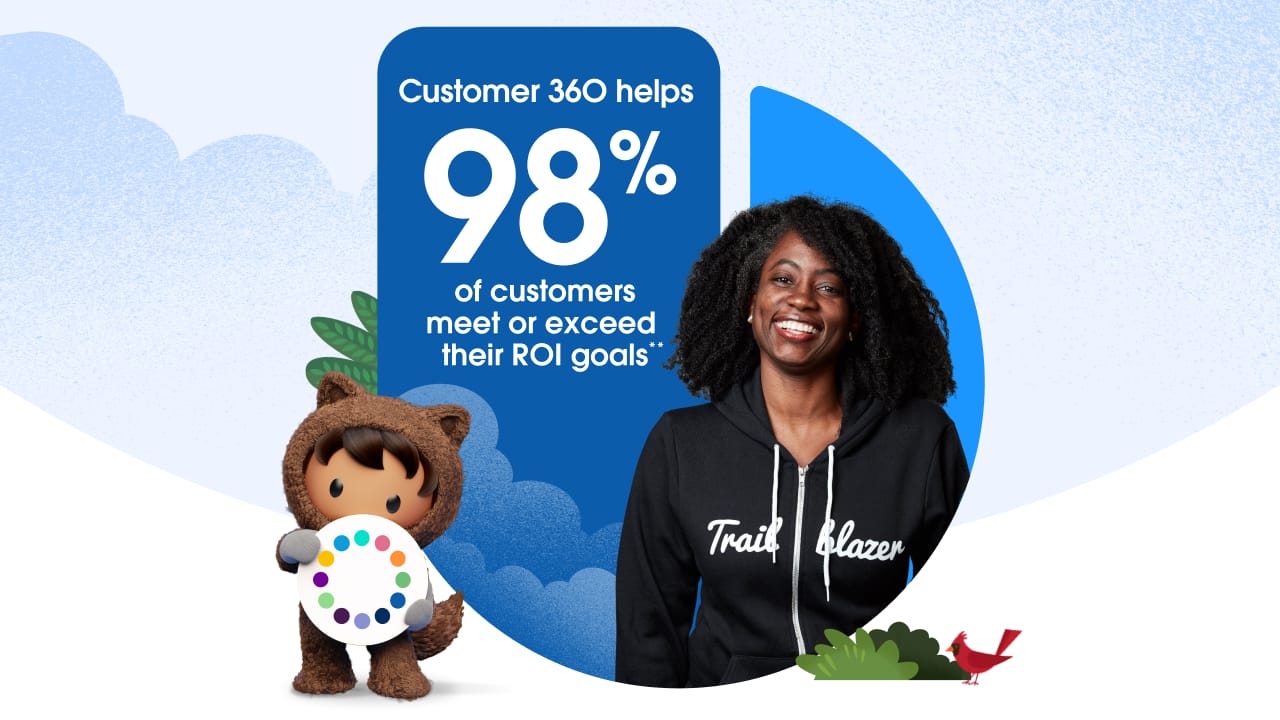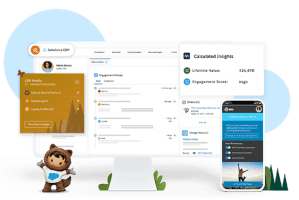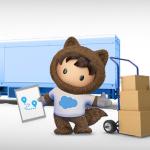A customer data platform (CDP) is a system that connects data from multiple sources in one place, providing businesses with a single view of their customers.
CDPs typically rely on first-party data, which is data collected directly from the source. When customers interact with your business, your CDP stores that data. For example, a CPD will collate when a customer engages with your business online through social media ads, website visits, and chatbots. A CDP will also consider non-digital touchpoints such as call centre interactions and billing.
A CDP consolidates all of this information into an individual customer profile, which allows marketers to deliver more personalised experiences. It also helps to understand buying behaviour and payment patterns. Sales teams can even use customer profiles to close deals faster. For example, a CDP can recommend the best products or services for a call centre agent to discuss with a customer.
A centralised location also simplifies customer data management. This is especially important if a customer wishes to exercise their privacy rights.
There is a growing concern about handling data, and businesses must comply with data privacy regulations, including the General Data Protection Regulation (GDPR). With the loss of third-party cookies, businesses need verified first-party data. They also must ensure customer privacy.
Many businesses use a customer data platform to deliver better customer experiences, improve data protection, and remain compliant.
In this guide, we’ll discuss how CDPs work and how they use data.
Deliver success now
Learn how Customer 360 helps you increase efficiency, improve results, and lower costs.

How do customer data platforms work?
A CDP takes disparate data sets and uses these to create a unified customer profile. It also keeps each customer profile up to date as new data becomes available.
Here are the main processes of a CDP:
1. Data collection
Most CPDs will not collect the data themselves. Instead, they connect the data collected by other systems, such as web analytics and customer relationship management (CRM) software.
They will typically connect first-party data, which includes customer behaviour when visiting your website or app and purchase data. CPDs can also connect zero-party data, which refers to information a customer purposefully shares with a business. Zero-party data may include preference centre information and other insights customers have proactively shared.
2. Data unification
A customer data platform connects your databases, storing your most valuable data in a single location. This consolidated view creates customer identities by unifying user history, behaviour, and other data.
Teams across the business can access customer identities that they can use across all channels and devices. With customer data stored and structured in one place, your business has more control over data protection.
Once your data is unified, your business can use segmentation (dividing customers into groups based on similar interests). This can help you understand your audience better and develop more personalised marketing campaigns.
3. Data activation
CDP software builds unified profiles based on what you know about the user, such as behaviour, demographics, and purchase data. Customer identities stay up to date so that marketing teams can ensure relevant and personalised engagements with customers.
Your CDP makes this information available to other databases in your business. This allows different departments to use customer identities across all channels, such as social media and email.
You can also use customer segments to find similar customers to your existing ones through targeted advertising.
4. Data insights
With unified customer profiles, your teams can uncover cross-channel insights. These allow your business to analyse user behaviour and enrich profiles.
The right technology can give your teams visualised insights, improving audience discovery and marketing performance. Artificial intelligence can help you uncover these insights.
What can a CDP do for my business?
While most CDP capabilities are related to marketing, you can also use a customer data platform in other business areas. Your business can use customer data platform insights for sales, service, and commerce.
Let’s take a look at some of the benefits of a CDP:
1. Personalisation
Personalised experiences create trust and loyalty and increase conversions. With individual customer profiles, marketers can tailor content, offers, recommendations, and engagements across all channels and devices.
2. Enhanced insights
Understanding customer behaviour helps you to make smarter marketing decisions.
When you use a CDP to combine databases, you’ll have enhanced insights at your fingertips. You can quickly find out what your customers are most interested in, which campaigns are most effective, and what content is the most relevant.
By unifying departments, you give your business access to increased insights about your customers so that you can deliver more value and more personalised experiences.
3. A centralised view of the customer
With one source of truth, internal teams can stay connected.
A CDP collects data from various sources and consolidates this information on one centralised platform to provide your business with a single view of the customer.
4. Marketing suppression
A CDP helps prevent marketing waste by identifying customers who have already purchased products or services. This will help you to avoid marketing to these individuals again.
Make every marketing moment smarter with Salesforce
CDPs allow businesses to get closer to their customers.
Thanks to unified customer profiles that influence more personalised experiences with the right technology, your business can make smarter marketing choices.
Within Salesforce’s Marketing Cloud, users can access the Salesforce Marketing Cloud Customer Data Platform.
The Salesforce Customer Data Platform (CDP) gives your business the ability to build smarter audience segments. You can capture and unify data from anywhere in one location for a complete view of your customers. With a single source of truth, you can personalise your customers’ journeys whenever and wherever they are.
Give every customer interaction context and relevance by connecting your marketing to sales, commerce, and more. This helps you deliver the right content to the right customer from anywhere.
Create customer profiles that integrate engagement data, orders, marketing journeys, and privacy management — so that you can know your customers better and adjust your marketing strategy accordingly. In turn, you’ll be able to improve loyalty and, ultimately, conversions.
Plus, you can protect your customer data with security measures and dashboards for opt-outs and consent flags.
With a comprehensive customer data platform like Salesforce’s, it’s easier to ensure every experience is personalised to every customer.
To find out more about how you can make every marketing moment smarter, visit our Salesforce Marketing Cloud Customer Data Platform page.
Deliver success now
Learn how Customer 360 helps you increase efficiency, improve results, and lower costs.


























